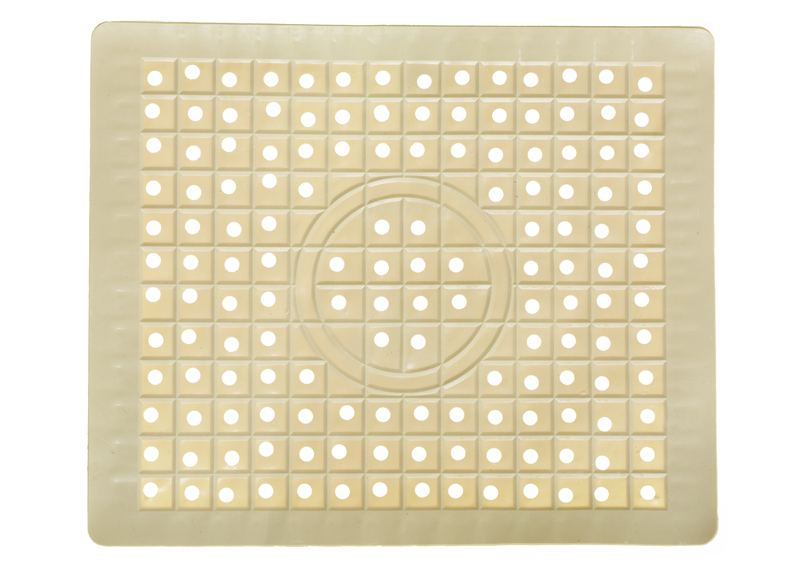Grease Be Gone: Transform Your Enamel Oven Trays with This Guide
Posted on 18/05/2025
Grease Be Gone: Transform Your Enamel Oven Trays with This Guide
Are your enamel oven trays plagued by stubborn grease stains and sticky residue? Don't despair--restoring your trays to a sparkling clean state is easier than you think! Welcome to the definitive, SEO-optimized guide on cleaning and revitalizing your enamel oven trays. Get ready to banish grease and enjoy a gleaming kitchen once again.

Why Is Cleaning Enamel Oven Trays Important?
Enamel oven trays are a kitchen staple, beloved for their durability and ability to withstand high temperatures. However, repeated use leads to layers of baked-on grease and grime. Aside from being unsightly, a neglected tray can:
- Affect the flavor of your food by imparting burnt or oily smells and tastes.
- Encourage the buildup of bacteria and unwanted microorganisms.
- Cause permanent damage and reduce the lifespan of your tray.
Regular cleaning keeps your oven trays in top condition, ensuring delicious dishes and a hygienic kitchen environment.
Understanding Enamel Oven Trays: Features and Benefits
Before diving into the best methods for cleaning grime off your enamel trays, let's briefly examine what makes them so popular:
- Non-reactive surface: Enamel coating doesn't react with acidic foods or leach flavors into your meals.
- Durable and heat-resistant: Built to withstand extreme oven temperatures and frequent use.
- Easy to clean: The smooth surface resists food sticking--unless significant grease buildup occurs!
When maintained properly, enamel trays preserve their glossy appearance and cooking performance for years.
Common Causes of Grease Build-Up on Enamel Oven Trays
- Cooking fatty foods without a liner or foil
- Using too much oil or cooking spray
- Neglecting prompt cleaning after use
- Repeated high-heat roasting and baking
- Spills and splatters from oven-baked dishes
Over time, these habits transform your shiny enamel trays into greasy, sticky messes that seem impossible to clean.
Step By Step Guide: How To Get Rid of Grease From Enamel Oven Trays
Ready for a transformation? Here's your ultimate, easy-to-follow guide to removing stubborn grease from enamel oven trays using proven, reader-friendly methods.
1. Basic Cleaning for Light Grease Build-Up
-
Let the tray cool:
After cooking, wait for your tray to cool before cleaning--this prevents burns and thermal shock. -
Soak in hot, soapy water:
Fill your sink with hot water and add a generous squirt of dish soap. Immerse the tray for 30 minutes, allowing grease to soften. -
Scrub with a non-abrasive pad:
Use a soft sponge or nylon brush, as abrasives can scratch and dull the enamel finish. -
Rinse and dry thoroughly:
Avoid leaving water spots by wiping the tray dry with a soft cloth.
2. Tackling Stubborn Grease and Burnt-On Stains
-
Baking soda and vinegar method:
Sprinkle baking soda generously over the greasy areas. Spray or drizzle white vinegar over the top. Let the mixture fizz for 10-15 minutes. Scrub gently with a non-abrasive pad and rinse well. -
Baking soda paste:
Make a thick paste of baking soda and water. Spread this over tough stains, let sit for 20 minutes, then scrub. -
Lemon and salt scrub:
For eco-friendly cleaning, sprinkle coarse salt onto greasy areas and rub with half a lemon. The natural acidity and abrasion help dissolve grease.
3. Heavy-Duty Cleaning: When Grease Just Won't Budge
-
Oven cleaner:
Use only enamel-safe oven cleaners (check label instructions). Spray onto the tray, let stand per manufacturer instructions, then scrub and rinse thoroughly. -
Soak overnight:
For extremely tough grime, fill your tray with hot water, add dish soap, and let it sit overnight. Next morning, use a plastic scraper to remove softened debris. -
Commercial degreasers:
If natural solutions don't work, select a kitchen degreaser that is enamel-friendly.
4. Avoid These Common Cleaning Mistakes!
- Never use metal scouring pads or steel wool--they'll damage your enamel coating.
- Don't use harsh chemicals like bleach, which may discolor or erode enamel.
- Never soak for excessively long periods in strong alkaline cleaners, as this can weaken the glaze.
- Avoid sudden temperature changes, which can cause enamel to crack.
Natural DIY Grease-Busting Solutions for Enamel Oven Trays
Many kitchen-ready, eco-friendly cleaners can restore your enamel trays without harsh chemicals. Try these time-tested ingredients:
- Baking soda: Cuts through grease and neutralizes odors
- Vinegar: Dissolves mineral deposits and breaks up fatty films
- Lemon juice: Natural degreaser and deodorizer
- Salt: Gently abrasive for scrubbing away stuck-on bits
Easy Recipe: DIY Baking Soda and Vinegar Cleaner
- Sprinkle a thin layer of baking soda across the tray.
- Drizzle white vinegar to create fizzing action.
- Let sit 15 minutes.
- Scrub gently with a sponge.
- Rinse and dry--repeat as necessary for sparkling results!
Preventing Grease Buildup: Pro-Tips and Best Practices
- Use parchment paper or a non-stick liner: This adds a barrier between your food and the enamel tray, making cleanup much easier.
- Wipe trays after each use: Don't let grease harden--clean up while the tray is still warm (not hot!).
- Regular deep cleaning: Even with liners, give your trays a thorough clean every few weeks to keep them at their best.
Storage Tips for Enamel Oven Trays
- Store trays dry: Avoid stacking damp trays, which can lead to rust at edges.
- Use tray dividers: Prevent scratching the enamel surface by separating trays in storage.
FAQs: Grease Removal and Enamel Tray Care
Can I put enamel oven trays in the dishwasher?
Most high-quality enamel oven trays are dishwasher safe. However, dishwashers may not always remove heavy grease. For deep cleaning, hand-wash using the methods above.
How often should I clean my enamel trays?
After each use for basic maintenance. For deeper cleaning, every 2-4 weeks is ideal depending on usage.
What if my enamel tray is discolored or stained?
A layer of grease and carbon deposits can cause yellow or brown discoloration. Try the baking soda paste or commercial enamel cleaner. Persistent stains may not affect function but can be minimized with regular deep cleans.
Will these methods work on other types of oven trays?
Some methods (such as vinegar and baking soda) are safe for most trays, but avoid using abrasives or harsh chemicals on non-enamel coatings. Always check the manufacturer's guidelines.
Benefits of Clean Enamel Oven Trays
- Better tasting food: No more burnt or off flavors from lingering grease.
- Longer-lasting trays: Prevent corrosion, chips, and wear.
- Healthier meals: Reduce exposure to bacteria and smoke from burnt residues.
- More attractive kitchenware: Display and use your trays with pride!
Troubleshooting: What If All Else Fails?
If you've tried every recommended method and your oven tray is still greasy or stained, consider:
- Soaking for longer: Give time for tough residue to break down.
- Trying another enamel-safe cleaner: Sometimes a second approach works wonders.
- Consulting the manufacturer: They may have specialized advice or approved cleaning products.
- Replacing the tray: If the enamel is chipped, cracked, or stripped, it's safest to invest in a new tray.

Conclusion: Grease Be Gone from Your Enamel Oven Trays!
With a handful of household ingredients and the right cleaning methods, you can transform your enamel oven trays from grimy to gorgeous. Make grease a thing of the past and enhance your kitchen's hygiene, food flavor, and style. Don't forget--regular maintenance is the key to easy cleaning and long-lasting trays.
Now that you have all the tools and tips for removing grease from enamel oven trays, reclaim your kitchen confidence. Happy cleaning--and happy cooking!
Further Reading & Related Resources
- Kitchen cleaning shortcuts from Good Housekeeping
- BBC Food: Oven cleaning techniques
- Cleanipedia: How to clean an oven tray
Transform those grimy enamel oven trays today and experience a grease-free, sparkling clean kitchen every time you cook!




